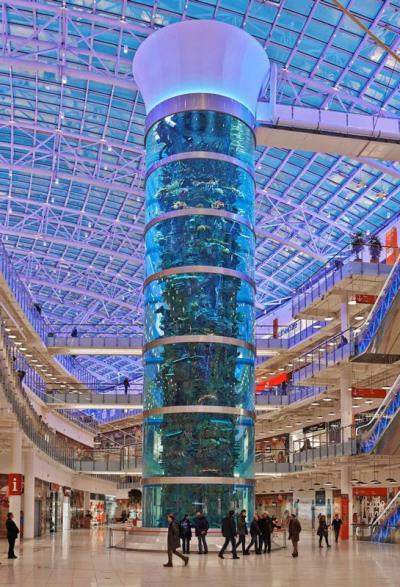R-Cast® Aquarium Window Design Types and Examples
Overview
Modern technology and materials have provided for attraction exhibits that were simply not possible a relatively short while ago. For example, could past generations have imagined a place where they could stand, at room temperature, while observing polar bears swimming by overhead? Or sliding safely through a clear tube within shark-infested waters? Most likely not, but such surrealistic experiences are available in many locations today through the use of acrylic. Modern aquarium and zoo windows are almost exclusively being made from this material that can be made to nearly any shape or size, is lighter than glass, stronger than concrete, and completely transparent.

Flat Panels: Cube Oceanarium ● Chengdu, China
The most common type of aquarium exhibit is based on the flat acrylic panel. Such windows may be rectangular or circular, small or large. What all quality flat panels have in common is the ability to safely retain water and a remarkable clarity. The thickness and shape of the panel will be the result of many factors, including the size of the exhibit and the type of animals within. Today’s aquarium visitor has grown to expect panels of a certain size. So called “mega panels” can be anywhere from the length of a small semi-trailer to that of a commercial airliner. All such windows are made possible though chemical bonding, which allows multiple panels to be fused together. However, with many acrylic manufacturers, there are all too often unsightly bonds that ruin the illusion being sought by the public, which is the momentary sense that they are somehow immersed inside of an underwater world versus standing outside of one. Not until recently has there been a way to truly erase bonds from the public eye.

